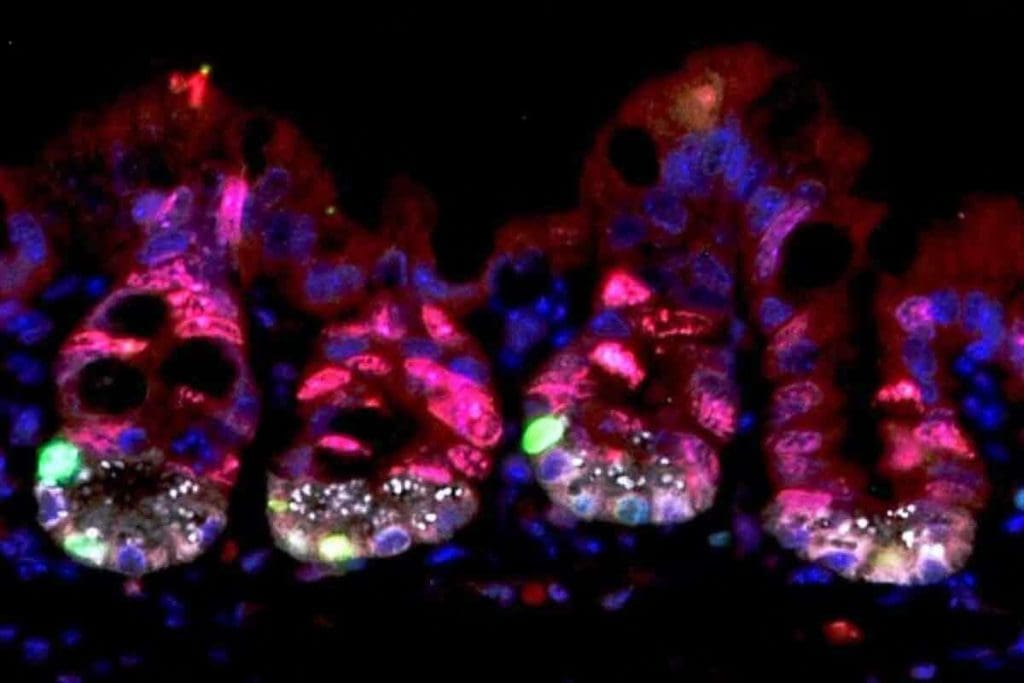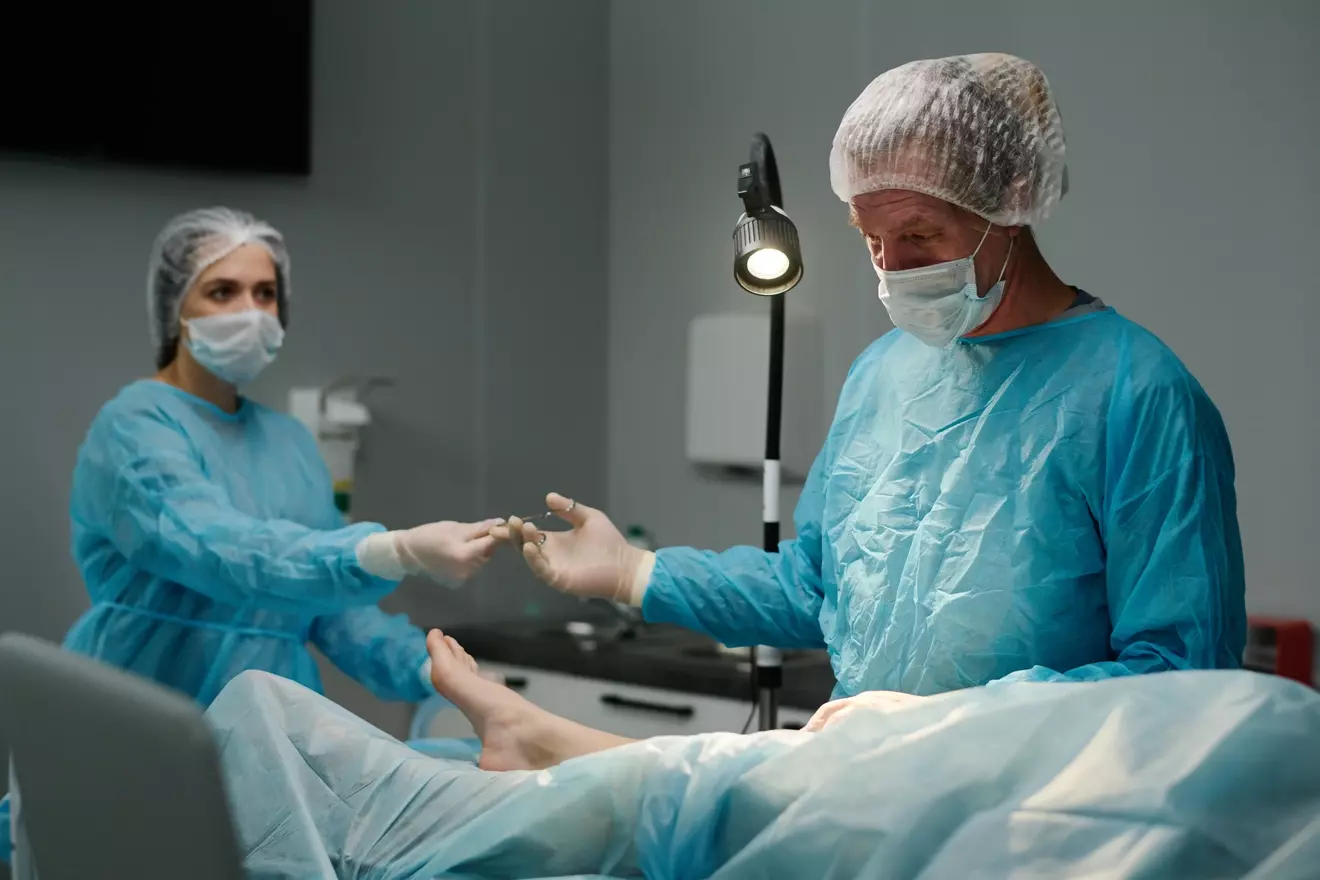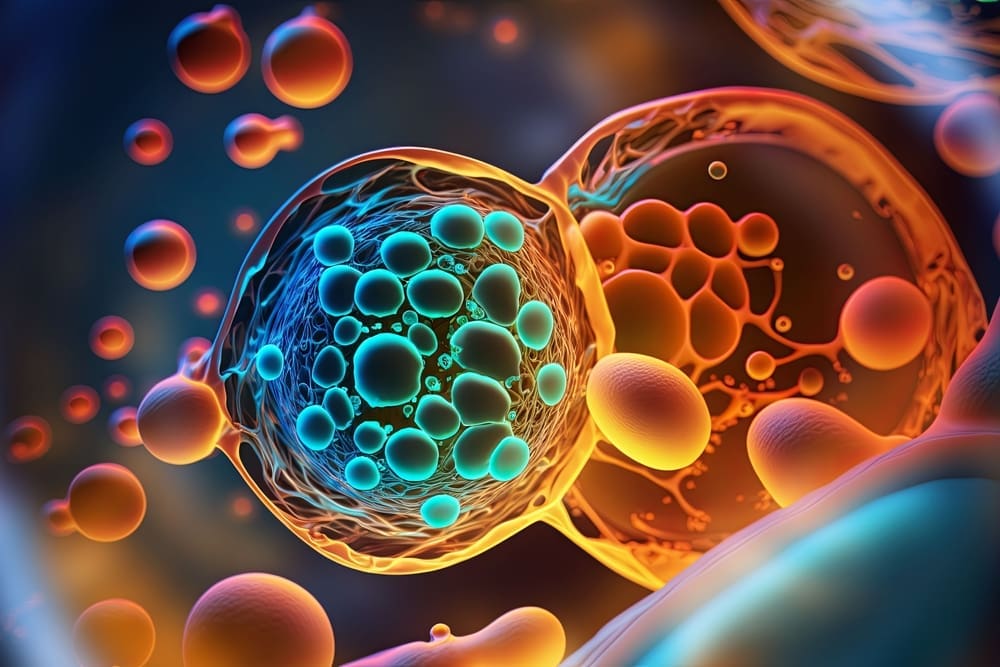Last Updated on November 27, 2025 by Bilal Hasdemir

Ionizing radiation is a big worry in medical care. It can mess with the atoms in human cells, leading many to ask, “What does radiation do to cells? It causes ionization, breaking molecular bonds and harming vital cell structures like DNA, which can lead to mutations or cell damage.
At Liv Hospital, we aim to give top-notch care and new ways to tackle ionizing radiation. Knowing how ionizing radiation harms human cells is key. It helps us create better treatments and keep patients safe.
Our team focuses on patient care, using the newest research and strict standards. This makes us a top name in safe, effective healthcare in Turkey and around the world.
Key Takeaways
- Ionizing radiation can cause big damage to human cells by breaking molecular bonds.
- DNA damage is a big worry with ionizing radiation.
- Liv Hospital is dedicated to giving world-class care and new methods.
- Understanding ionizing radiation’s effects is vital for making good treatments.
- Our care is centered on patients, backed by the latest research and strict standards.
The Fundamentals of Ionizing Radiation

It’s important to know about ionizing radiation to understand its health effects. This type of radiation has enough energy to remove electrons from atoms, creating ions. This can damage DNA in cells, leading to cell death or mutations.
Types of Ionizing Radiation
Ionizing radiation includes alpha particles, beta particles, gamma rays, X-rays, and neutrons. Each type has different properties and how far it can travel.
- Alpha Particles: These are high-energy helium nuclei. They are large and charged, so they can be stopped by a sheet of paper or the outer layers of human skin.
- Beta Particles: These are high-energy electrons. They are smaller and lighter than alpha particles and can travel several meters in air and several millimeters in tissue.
- Gamma Rays and X-rays: These are forms of electromagnetic radiation, similar to light but with much higher energy. They can penetrate deeply into tissues and are often used in medical imaging and radiation therapy.
- Neutrons: These are particles with no charge that are released during nuclear reactions. They can penetrate deeply into tissues and are a significant concern in nuclear reactor environments.
Sources of Radiation Exposure
Radiation exposure comes from both natural and artificial sources.
- Natural Sources: Cosmic rays from space and radionuclides in the earth, such as radon, contribute to natural background radiation.
- Artificial Sources: Medical imaging (like X-rays and CT scans), nuclear medicine, and industrial applications are significant sources of artificial radiation.
Measuring Radiation Doses
The dose of radiation is measured in several units, including the Gray (Gy) and Sievert (Sv). The Gray measures absorbed dose, while the Sievert measures the biological effect of radiation.
| Type of Radiation | Composition | Penetration Power |
| Alpha Particles | Helium nuclei | Low (stopped by paper or skin) |
| Beta Particles | Electrons | Moderate (travel several meters in air) |
| Gamma Rays/X-rays | Electromagnetic radiation | High (deeply penetrate tissues) |
| Neutrons | Neutron particles | High (deeply penetrate tissues) |
The Ionization Process in Human Tissue

Ionizing radiation enters human tissue and starts a chain of events that can harm cells. This begins at the atomic level, where radiation interacts with the atoms in our cells and tissues.
How Radiation Disrupts Atomic Structure
Ionizing radiation has enough energy to remove tightly bound electrons from atoms. This creates ions and is called ionization. When an atom loses an electron, it becomes charged, either positively or negatively.
This change in atomic structure is the first step towards damage in cells. The ionization process can happen in different ways, like the photoelectric effect, Compton scattering, and pair production, depending on the radiation’s energy and type.
Energy Transfer and Molecular Bond Breakage
As ionizing radiation moves through human tissue, it gives its energy to atoms and molecules. This energy can break molecular bonds. These bonds are key for the structure and function of biological molecules like DNA, proteins, and cell membranes.
When molecular bonds break, cell function can be disrupted. For example, DNA damage can cause genetic mutations or cell death if not fixed.
Primary vs. Secondary Ionization Events
Ionization events from radiation can be primary or secondary. Primary ionization happens when radiation directly ionizes an atom or molecule. Secondary ionization occurs when secondary electrons from primary ionization interact with other atoms or molecules.
These secondary electrons can travel far and cause more ionization. Understanding primary and secondary ionization is key to understanding radiation’s effects on human tissue. It also helps in finding ways to reduce radiation damage.
What Does Radiation Do to Cells: Primary Damage Mechanisms
Radiation affects cells in many ways, including direct and indirect damage. Knowing these main ways is key to finding good treatments for radiation exposure.
Direct Action: Immediate Molecular Damage
Direct action means radiation directly harms cells, mainly DNA. Ionizing radiation breaks DNA bonds, causing single and double-strand breaks. This can lead to genetic changes or cell death if not fixed.
A study in Nature Communications shows how direct DNA damage can kill cells.
Indirect Action: Free Radical Formation
Indirect action happens when radiation makes free radicals in cells. This happens when radiation hits water in cells. The free radicals, like hydroxyl radicals, can harm DNA, proteins, and membranes.
- ROS can damage DNA, causing mutations.
- Proteins can be damaged or not work right because of ROS.
- Membranes can get damaged, messing with cell signals.
Oxidative Stress and Cellular Damage
Radiation makes ROS, leading to oxidative stress. This is when there’s too much oxidant and not enough antioxidant. Oxidative stress harms cells in many ways.
Oxidative stress can:
- Damage DNA, causing genetic problems.
- Change how proteins work, affecting cell functions.
- Make membranes weak, hurting cell survival.
Understanding how radiation damages cells is vital. By knowing direct and indirect actions, we can tackle radiation’s effects better.
Cellular Structures Vulnerable to Radiation
Ionizing radiation can harm several key parts of cells. It can damage different parts of the cell, causing problems with how cells work.
Cell Membrane Damage
The cell membrane controls what goes in and out of the cell. Radiation can harm this membrane, making it less effective. This can make it hard for the cell to keep its internal environment stable.
Cell membrane damage can also let important cell parts leak out. This lets harmful substances get in, hurting the cell even more.
Mitochondrial Disruption
Mitochondria are key for making energy in cells. Ionizing radiation can mess with how they work. This can lower energy production and increase harmful substances in the cell.
The damage to mitochondrial function can start cell death. It happens because the cell can’t make enough energy and gets too much oxidative stress.
Protein Denaturation and Dysfunction
Proteins are vital for many cell functions, like making DNA and sending signals. Radiation can change proteins’ shape and function. This makes them unable to do their jobs.
Protein denaturation can cause cells to not work right. It can also lead to cell stress and start stress response pathways.
DNA as the Critical Target of Radiation Damage
DNA is a key target for ionizing radiation. Its health is vital for cell function and survival. Damage from radiation can cause genetic mutations and harm cells.
Types of DNA Lesions Caused by Radiation
Ionizing radiation can cause different DNA lesions. These include single-strand breaks, double-strand breaks, base modifications, and crosslinking. These can make DNA unstable.
- Single-strand breaks happen when one DNA strand is damaged.
- Double-strand breaks are more severe, affecting both strands, leading to complex repairs.
- Base modifications change DNA bases, possibly altering genetic coding.
- Crosslinking creates abnormal bonds in DNA or between DNA and proteins.
Single and Double-Strand Breaks
Single-strand breaks are common and can be fixed by cells. But, double-strand breaks are harder to repair. They can cause big problems if not fixed right.
Double-strand breaks are dangerous. They can lead to genetic material loss or changes, causing mutations or chromosomal issues.
Base Modifications and Crosslinking
Base modifications can change the genetic code, affecting gene expression. Crosslinking can mess up DNA structure, blocking cell processes like replication and transcription.
“The complexity of DNA damage caused by ionizing radiation highlights the need for precise DNA repair to keep the genome stable.”
Chromosomal Aberrations and Genomic Instability
Unrepaired DNA damage can cause chromosomal aberrations. This leads to genomic instability, seen in many diseases like cancer. This instability can lead to mutations and change how cells behave.
Knowing about DNA lesions and their effects is key. It helps us understand radiation risks. It also guides us in finding ways to reduce these risks.
Cellular DNA Repair Mechanisms
When radiation damages DNA, cells start various repair pathways to fix it. This is key to keeping the genome stable and preventing mutations. Mutations can lead to cancer or other diseases.
Cells have complex ways to repair DNA damage. These include base excision repair, nucleotide excision repair, and double-strand break repair. Each pathway is vital for fixing different DNA damage types.
Base Excision Repair
Base excision repair fixes damage to individual DNA bases. It removes damaged bases and then repairs the site. Base excision repair is key for fixing damage from oxidative stress, which radiation can cause.
- Recognition and removal of damaged bases
- Incision of the DNA backbone
- Repair synthesis to fill the gap
- Ligation to seal the DNA strand
Nucleotide Excision Repair
Nucleotide excision repair fixes complex DNA damage, like bulky adducts. It removes a larger DNA segment with damage and then repairs it.
This repair is important when exposed to radiation. It helps fix DNA damage that could cause genetic mutations.
Double-Strand Break Repair Pathways
Double-strand breaks are severe DNA damage from ionizing radiation. Cells use two main ways to repair them: non-homologous end joining (NHEJ) and homologous recombination (HR).
- Non-homologous end joining (NHEJ): A faster but more error-prone method
- Homologous recombination (HR): A more accurate method that uses a template for repair
Limitations of Repair Systems
Even though DNA repair is effective, it’s not perfect. Repair errors can cause mutations. Sometimes, damage is too much for the cell to fix, leading to cell death.
Knowing the limits of DNA repair is key to fighting radiation effects. Understanding how cells repair DNA damage helps us see why radiation is harmful. It also shows how we might prevent or treat radiation injuries.
Cell Death Pathways Triggered by Radiation
Ionizing radiation can cause different types of cell death. Each type has its own way of happening and its effects. Knowing about these pathways helps us understand how radiation affects living tissues.
Apoptosis: Programmed Cell Death
Apoptosis, or programmed cell death, is a key response to radiation. It’s a series of changes that end in the cell’s death. This process is vital for removing damaged cells that could turn cancerous.
Mitotic Catastrophe in Dividing Cells
Mitotic catastrophe happens when cells try to divide with damaged DNA from radiation. This leads to abnormal cell division and death. It’s a way to stop cells with unstable DNA from spreading.
Cellular Senescence
After radiation, cells can enter a state of cellular senescence. These cells can’t divide anymore but are alive. They can stay this way for a long time, affecting the tissue around them.
Necrosis and Inflammatory Response
Necrosis is a type of cell death from sudden injury. It’s not programmed like apoptosis and can cause inflammation. Radiation-induced necrosis can harm tissues and make repair harder.
The cell death pathways caused by radiation are complex. They involve many cellular processes. Understanding these is key to finding ways to lessen radiation damage.
| Cell Death Pathway | Description | Key Features |
| Apoptosis | Programmed cell death | Cell shrinkage, DNA fragmentation, caspase activation |
| Mitotic Catastrophe | Cell death during mitosis | Abnormal mitotic figures, failure to complete cell division |
| Cellular Senescence | Irreversible cell cycle arrest | Viable but non-dividing, senescence-associated secretory phenotype |
| Necrosis | Unprogrammed cell death | Cell swelling, loss of membrane integrity, inflammatory response |
Radiosensitivity: Why Different Cells Respond Differently
Different cells and tissues have unique responses to radiation. This is because of their radiosensitivity. It shows how much harm ionizing radiation can cause to each cell type.
The Law of Bergonié and Tribondeau
In the early 20th century, the law of Bergonié and Tribondeau was discovered. It says that cells that divide a lot and are less specialized are more sensitive to radiation. This law helps us understand why some tissues are more harmed by radiation.
Rapidly Dividing Cells vs. Differentiated Cells
Cells that divide often are more sensitive to radiation. For example, stem cells in the bone marrow and gut divide a lot. On the other hand, cells like neurons, which don’t divide much, are less sensitive. This difference is key to understanding how radiation affects different parts of our body.
Tissue-Specific Radiation Sensitivity
Each organ and tissue has its own level of radiation sensitivity. The bone marrow, full of stem cells, is very sensitive. This can cause problems with blood production after too much radiation. Other areas like the skin, gut, and reproductive organs also have different sensitivities, affecting how radiation is experienced.
| Tissue/Organ | Radiosensitivity | Reason |
| Bone Marrow | High | Rich in rapidly dividing stem cells |
| Gastrointestinal Tract | High | Rapid cell turnover in the lining |
| Reproductive Organs | Moderate | Contains dividing cells, sensitive to radiation-induced damage |
| Muscle | Low | Primarily composed of differentiated, non-dividing cells |
Genetic Factors Affecting Radiosensitivity
Genetics also play a big role in how sensitive we are to radiation. Some genetic conditions, like Ataxia-Telangiectasia, make us more sensitive. Knowing this helps us understand the risks of radiation and how to treat it better.
By looking at these factors, we can see why different cells and tissues react differently to radiation. This is important for protecting ourselves and for using radiation in treatments.
The Role of p53 and Other Guardian Genes
The p53 gene acts as a guardian when DNA is damaged by radiation. We’ll see how p53 and other guardian genes keep our DNA safe.
How p53 Detects DNA Damage
The p53 protein kicks in when DNA is damaged, like by ionizing radiation. It finds damage through different signals that show DNA is broken. Then, p53 starts several actions to fix the damage.
“The p53 protein is a critical regulator of the cellular response to DNA damage, acting to prevent the propagation of mutations that could lead to cancer.”
Source: A scientific review on p53 functions.
Cell Cycle Arrest and Repair Coordination
When DNA damage is found, p53 stops the cell cycle. This pause lets DNA repair happen. It’s key to stop damaged DNA from being copied and causing more problems. Repairing DNA involves turning on different repair paths.
- Base excision repair
- Nucleotide excision repair
- Double-strand break repair
Triggering Apoptosis When Repair Fails
If DNA damage is too much to fix, p53 starts apoptosis. This means the damaged cell dies. It’s important to stop cells that could turn cancerous.
Consequences of p53 Mutations
Changes in the p53 gene can make it lose its protective role. This leads to more DNA damage and a higher risk of cancer. The number of p53 mutations in cancers shows how important it is for our DNA health.
| Cancer Type | Frequency of p53 Mutations |
| Breast Cancer | 30-40% |
| Lung Cancer | 50-60% |
| Colorectal Cancer | 40-50% |
Dose-Dependent Effects of Radiation on Human Cells
The dose and how long you’re exposed to ionizing radiation matter a lot. The way our cells react to radiation isn’t straightforward. It changes a lot based on the dose and how long you’re exposed.
Low-Dose Radiation Effects
Even small amounts of ionizing radiation might not hurt right away. But, they can cause problems later on. These problems can include a higher chance of getting cancer and genetic changes because of DNA damage.
Chronic exposure to small amounts of radiation can build up damage over time. This could lead to health problems.
Moderate Exposure Consequences
When you get a moderate dose of radiation, you might see more serious effects. These can include harm to your bone marrow, lungs, and stomach. You might feel sick, tired, and have a weaker immune system.
How bad these effects are depends on the dose and your health.
High-Dose Radiation Syndrome
Getting a high dose of ionizing radiation can be very dangerous. It can cause acute radiation syndrome (ARS), which is serious. ARS happens when you get a lot of radiation quickly, damaging many parts of your body.
Symptoms of ARS include really bad nausea, vomiting, diarrhea, and feeling very tired. It can also harm your bone marrow, lungs, and stomach.
Acute vs. Chronic Exposure
It’s important to know the difference between acute and chronic exposure. Acute exposure means getting a lot of radiation in a short time. Chronic exposure means getting smaller doses over a longer time.
Both kinds of exposure can harm your health, but the effects are different.
Conclusion
Ionizing radiation can harm human cells by damaging DNA and causing cell death. This damage can lead to different effects. The severity of these effects depends on how much and how fast the radiation is exposed.
At Liv Hospital, we understand the impact of ionizing radiation on cells. Knowing this helps us create better medical treatments. We aim to provide top-notch healthcare, following international standards, and supporting our patients every step of the way.
For more details on ionizing radiation’s effects, check out the National Center for Biotechnology Information. Our team keeps up with the latest in radiation oncology. This ensures our patients get the best care available.
FAQ
What is ionizing radiation and how does it damage human cells?
Ionizing radiation is a form of energy that can remove electrons from atoms. This creates ions. It damages human cells by breaking molecular bonds and causing DNA damage.
How does radiation cause DNA damage?
Radiation damages DNA in two ways. Directly, it interacts with DNA, causing breaks. Indirectly, it creates free radicals that damage DNA.
What are the different types of DNA lesions caused by radiation?
Radiation can cause several DNA lesions. These include single and double-strand breaks, base modifications, and crosslinking. If not fixed, these can lead to genomic instability.
How do cells repair DNA damage caused by radiation?
Cells have complex repair mechanisms. These include base excision repair, nucleotide excision repair, and double-strand break repair. These are key to keeping the genome stable.
What are the consequences of radiation exposure on human cells?
Exposure to radiation can cause cell death, genetic mutations, and genomic instability. The extent of these effects depends on the dose and duration of exposure.
How does radiation affect different cellular structures?
Radiation can harm various cellular structures. This includes cell membranes, mitochondria, and proteins. Such damage can disrupt cellular function and contribute to radiation’s effects.
What is the role of p53 in responding to radiation-induced DNA damage?
The p53 gene is vital in detecting DNA damage from radiation. It can stop the cell cycle, repair DNA, or trigger apoptosis, based on the damage’s severity.
How does radiation induce cell death?
Radiation can cause cell death through several pathways. These include apoptosis, mitotic catastrophe, senescence, and necrosis. The pathway depends on the cell type, radiation dose, and other factors.
What factors influence the radiosensitivity of different cells?
Several factors affect a cell’s radiosensitivity. These include cell division rates, tissue type, and genetic background. Rapidly dividing cells are more sensitive to radiation.
What are the differences between acute and chronic radiation exposure?
Acute exposure involves a high dose over a short time. Chronic exposure is a lower dose over a longer time. The effects of these exposures can differ significantly.
How does radiation dose affect the severity of biological consequences?
The dose of radiation greatly influences the biological consequences. Higher doses can cause more severe damage, including cell death and genomic instability.
Reference
Reisz, J. A., et al. (2014). Effects of Ionizing Radiation on Biological Molecules. International Journal of Molecular Sciences, 15(11), 21415“21437. https://pmc.ncbi.nlm.nih.gov/articles/PMC4060780/






